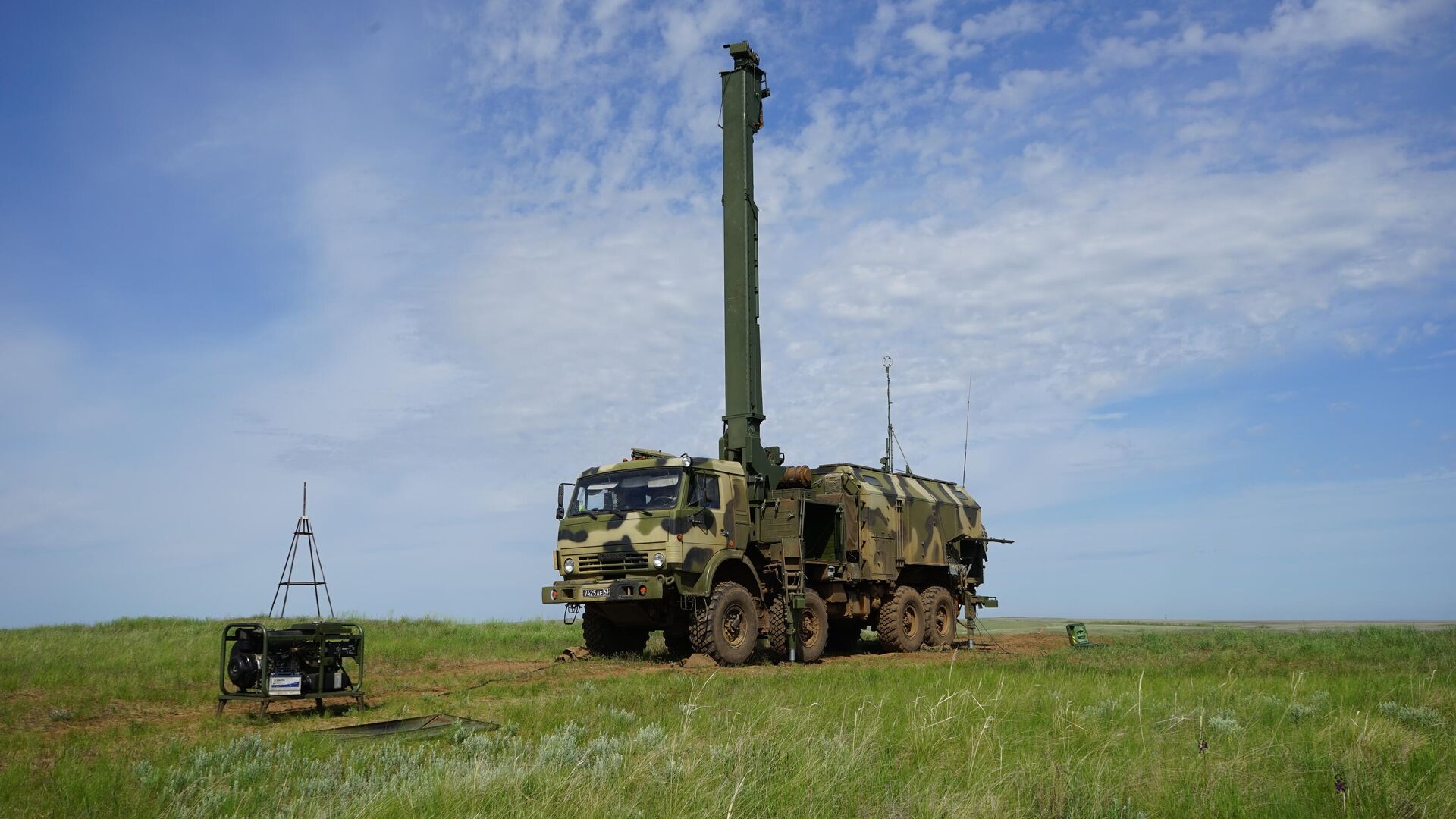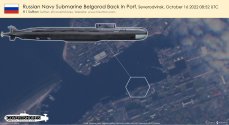The anti-aircraft and tactical missiles accoustic part is interesting against stealth aircrafts and cruise missiles. If it can be used like a warning system at least to be able to scramble interception or concentrate radar searching to a more precise area for tracking. It still need to be connected to a communications infrastructures to send data fast to other asset to be really usefull in that regard.Penicillin reconnaissance systems effectively deal with NATO artillery in Ukraine
MOSCOW, October 15 - RIA Novosti. The latest Russian artillery reconnaissance systems "Penicillin" have confirmed their effectiveness in battles in Ukraine, including in the fight against NATO artillery supplied to Ukrainian troops, an informed source told RIA Novosti.
"Several 1B76 Penicillin artillery reconnaissance systems have been tested in combat conditions in Ukraine. The complexes have demonstrated high efficiency in the framework of counter-battery combat against the artillery of the Ukrainian troops, including those used by Ukrainian military artillery systems of NATO countries," the agency's interlocutor said.
"Penicillin" is intended for reconnaissance of firing positions of cannon and rocket artillery, as well as anti-aircraft and tactical missiles. The complex captures acoustic and thermal waves from shots and explosions and provides the operator with the exact coordinates of the location of the enemy gun for manual and automatic drawing on an electronic map. At the same time, the time for obtaining the coordinates of a single target firing is no more than five seconds.
The difference between "Penicillin" and the American AN / TPQ-36 counter-battery radar used by the Ukrainian troops is that it does not use radio waves, so it cannot be detected by radio equipment and suppressed by electronic warfare systems.
"Penicillin" was developed by the enterprise of the Scientific Research Institute "Vector", which is part of "Ruselectronics". The complex works effectively at any time of the day at temperatures ranging from minus 40 to plus 50 degrees Celsius. The system is installed on the Kamaz chassis, its reconnaissance optoelectronic module is mounted on a lifting mast.

You are using an out of date browser. It may not display this or other websites correctly.
You should upgrade or use an alternative browser.
You should upgrade or use an alternative browser.
Russian Military News, Reports, Data, etc.
- Thread starter tphuang
- Start date
supercat
Colonel
I'm wondering if Tu-22M3M, which can carry 4 Kinzhals each, has been deployed or used.Belarusian media are reporting at least six MiG-31 spotted over Minsk carrying Kinzhal hypersonic missile.
I do not think Tu-22M3M was put into service yet. Plus last time I heard about it the Russians only had finished upgrading two aircraft.I'm wondering if Tu-22M3M, which can carry 4 Kinzhals each, has been deployed or used.
The reports it can carry the Kinzhal are also not conclusive. Official Russian reports only talk about it supporting the Kh-32.
Other than possible compatibility with the older Tu-22M3 I do not know why they even bothered making the Kh-32 since the Kinzhal is superior in every single metric.
I'm wondering if Tu-22M3M, which can carry 4 Kinzhals each, has been deployed or used.
Something big will happen?
Since when can a Backfire carry four of them and in fact I don‘t remember even an image with carrying one!??
No Tu-22M3 has been spotted carrying Kinzhal. The Tu-22M3M modernization in theory could carry them but they haven't made any integration tests or anything like it, only modified MiG-31 can carry them so far.
In theory it should fit since Kinzhal is smaller and lighter than the Kh-22. It has slightly smaller diameter and is shorter and lighter. The Tu-22M3M would have less top speed than the MiG-31 though so the range of the missile would be reduced. If they ever got it to work.
I should be a lot easier to get it working in the Tu-22M3M because it has more modern avionics and glass cockpit.
I do not know if the missile has compatibility with the existing weapons mounts though.
I should be a lot easier to get it working in the Tu-22M3M because it has more modern avionics and glass cockpit.
I do not know if the missile has compatibility with the existing weapons mounts though.
I dont think they publish alot about bomber specific upgrades.No Tu-22M3 has been spotted carrying Kinzhal. The Tu-22M3M modernization in theory could carry them but they haven't made any integration tests or anything like it, only modified MiG-31 can carry them so far.
how many times we have seen Tu-160M1 any armament tests just like internal weopon bay missile launches from PAK-FA.
Starting from 2014, partial improvements have been introduced on six Tu-160M1 (first-stage upgrade) bombers. Enhancements have been made to the aircraft’s inertial navigation and engine control systems, along with the platform’s armaments, through “modern digital technologies”.
So from what I understand from these articles Russia is developing two hypersonic missiles other than Kinzhal, one for Tu-22M3M, and another for Su-57. This might be as simple as modifying the first stage of the Kinzhal so it is tailored for aircraft with lower top speed than the MiG-31, or that the first stage can fit inside the internal bays of the stealth aircraft, but it remains to be seen what they did.
27 May 2020
The Tupolev Aircraft Company (part of the United Aircraft Corporation) confirmed on Wednesday it was testing the second prototype of the heavily upgraded Tu-22M3M long-range missile-carrying bomber at supersonic speed.
...
Viktor Bondarev, currently Head of the Federation Council’s Defense and Security Committee, earlier said that the bomber’s upgraded version could carry Kh-32 cruise missiles and hypersonic weapons.
11 May 2020
Russian air forces have recently tested a new hypersonic aircraft missile, a source in the military-industrial complex told TASS. The missile is being created for a modified version of the Tu-22M3M aircraft, the source added.
...
According to the source, the work on the new missile began several years ago. Its tests should be completed simultaneously with the work on the upgraded Tu-22M3M bomber.
...
He clarified that this missile does not belong to the line of X-32 missiles, noting that it is "completely different." The official did not name the characteristics of the new missile.
27 May 2020
The Tupolev Aircraft Company (part of the United Aircraft Corporation) confirmed on Wednesday it was testing the second prototype of the heavily upgraded Tu-22M3M long-range missile-carrying bomber at supersonic speed.
...
Viktor Bondarev, currently Head of the Federation Council’s Defense and Security Committee, earlier said that the bomber’s upgraded version could carry Kh-32 cruise missiles and hypersonic weapons.
11 May 2020
Russian air forces have recently tested a new hypersonic aircraft missile, a source in the military-industrial complex told TASS. The missile is being created for a modified version of the Tu-22M3M aircraft, the source added.
...
According to the source, the work on the new missile began several years ago. Its tests should be completed simultaneously with the work on the upgraded Tu-22M3M bomber.
...
He clarified that this missile does not belong to the line of X-32 missiles, noting that it is "completely different." The official did not name the characteristics of the new missile.
PMC "Wagner" showed the creation of an anti-tank "Wagner Line" with the help of an engineering vehicle MDK-3. The MDK-3 excavation machine is a further development of the MDK-2m machine and is designed to excavate shelters for vehicles and create pits. The car entered service with the army at the end of the 80s, but did not take root in the troops, let's say because of its excess power and turned out to be structurally difficult to operate and repair. The machine has a pressurized cabin and digs a pit, including in frozen ground, moving in reverse. The MDK-3 can dig a cover for a tank in just 3 minutes. Machine capacity: 1000 m³/hour. The depth of the created trenches is up to 3.5 meters, the width along the bottom is 3.7 meters. Crew 2 people and three paratroopers. The car has a night vision device. Diesel multi-fuel V-shaped V-46-4 engine. The maximum speed on the highway is 65 km/h. Fuel reserve. 500 km. or 10-12 noon. Work.

